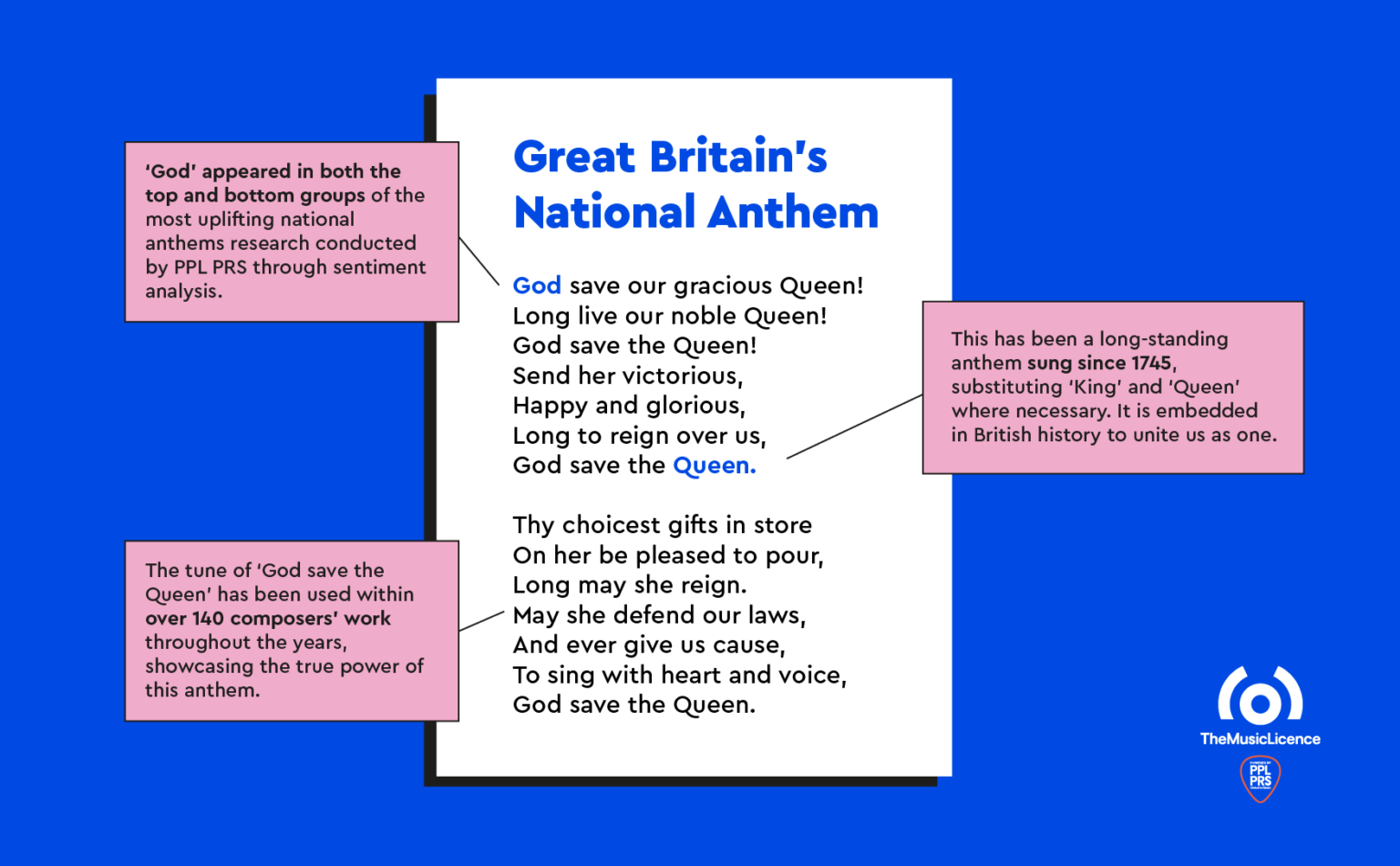Historical Significance

National anthems have a long and rich history, dating back to the early days of nation-states. The first known national anthem was “God Save the Queen,” which was first performed in 1740. Since then, national anthems have become an important part of national identity, and they are often used to express a country’s values and history.
You know what’s a banger? The national anthem. I mean, it’s got everything: catchy melody, patriotic lyrics, and it makes you feel all warm and fuzzy inside. And if you’re like me, you probably know all the words to it.
So next time you’re at a sporting event or a school assembly, belt it out with pride! (For more info on the national anthem , click here.)
Some of the most famous national anthems include “The Star-Spangled Banner” of the United States, “La Marseillaise” of France, and “God Save the Queen” of the United Kingdom. These anthems have all had a significant impact on their respective countries, and they continue to be sung with pride and passion today.
The national anthem is a song that represents a country, and it’s usually played at important events. Speaking of important events, have you heard of Miguel Borja ? He’s a Colombian footballer who plays for Junior Barranquilla. Anyway, back to the national anthem, it’s a powerful symbol of national pride and unity.
Evolution of National Anthems
National anthems have evolved over time, reflecting the changing values and circumstances of the countries they represent. For example, “The Star-Spangled Banner” was originally written as a poem about the Battle of Fort McHenry during the War of 1812. However, it was later adopted as the national anthem of the United States, and its lyrics have been revised several times to reflect the country’s changing values and aspirations.
Today, national anthems continue to play an important role in national identity. They are sung at sporting events, national holidays, and other important occasions. They are a reminder of our shared history and values, and they help to unite us as a nation.
Cultural and Symbolic Meaning
National anthems hold immense cultural significance and serve as powerful symbols of national identity. They embody the shared values, beliefs, and aspirations of a nation, evoking a sense of unity and belonging among its citizens.
National anthems often reflect the historical struggles, triumphs, and cultural heritage of a country. They may include references to national heroes, landmarks, or events that have shaped the nation’s identity. By singing or listening to their national anthem, citizens can feel connected to their country’s past and present.
National Values and Beliefs
National anthems often express the core values and beliefs of a nation. They may include references to freedom, equality, justice, or other ideals that are held dear by the people. By singing their national anthem, citizens can reaffirm their commitment to these values and strengthen their sense of national unity.
National Aspirations
National anthems can also express the hopes and aspirations of a nation. They may include lyrics that speak of a better future, a desire for peace, or a longing for national greatness. By singing their national anthem, citizens can express their optimism for the future and their belief in their country’s potential.
Use in Cultural Events and Ceremonies
National anthems are an integral part of many cultural events and ceremonies. They are typically performed at official functions, sporting events, and other occasions that have national significance. By singing their national anthem at these events, citizens can demonstrate their patriotism and celebrate their national identity.
Composition and Structure: National Anthem

National anthems, while embodying the spirit of a nation, showcase a diverse array of structures and compositions. To delve into this realm, let’s embark on a comparative journey, examining the architectural blueprint of these musical masterpieces.
Common Elements and Variations
Amidst the kaleidoscope of national anthems, certain common threads emerge. These unifying elements, like the warp and weft of a musical tapestry, weave together the fabric of these anthems.
- Tempo: The tempo, or speed, of national anthems varies widely, ranging from the stately grandeur of “God Save the Queen” to the brisk cadence of “La Marseillaise.” This variation reflects the unique character and temperament of each nation.
- Key: The key, or tonal center, of national anthems also exhibits diversity. Major keys, such as C major or G major, often convey a sense of triumph and optimism, while minor keys, such as A minor or E minor, may evoke a more somber or reflective mood.
- Instrumentation: The instrumentation of national anthems spans a vast spectrum, from the full-throated roar of a brass band to the delicate strains of a string quartet. The choice of instruments reflects the cultural heritage and musical traditions of each country.
Typical Sections and Stanzas
While national anthems display a kaleidoscope of forms, certain structural patterns often emerge. These sections and stanzas serve as the building blocks of these musical edifices.
- Verse: The verse, or stanza, is the primary unit of a national anthem. It typically consists of a set of lyrics that express the nation’s history, values, or aspirations.
- Chorus: The chorus, or refrain, is a recurring section that encapsulates the anthem’s central message or sentiment. It is often sung with greater intensity and volume than the verses.
- Bridge: The bridge, or interlude, provides a contrasting section that often introduces a new melody or lyrical theme. It serves to break up the monotony of the verses and chorus and add depth to the anthem.
- Coda: The coda, or ending, brings the anthem to a close. It may consist of a repetition of the chorus, a new melodic passage, or a gradual fade-out.